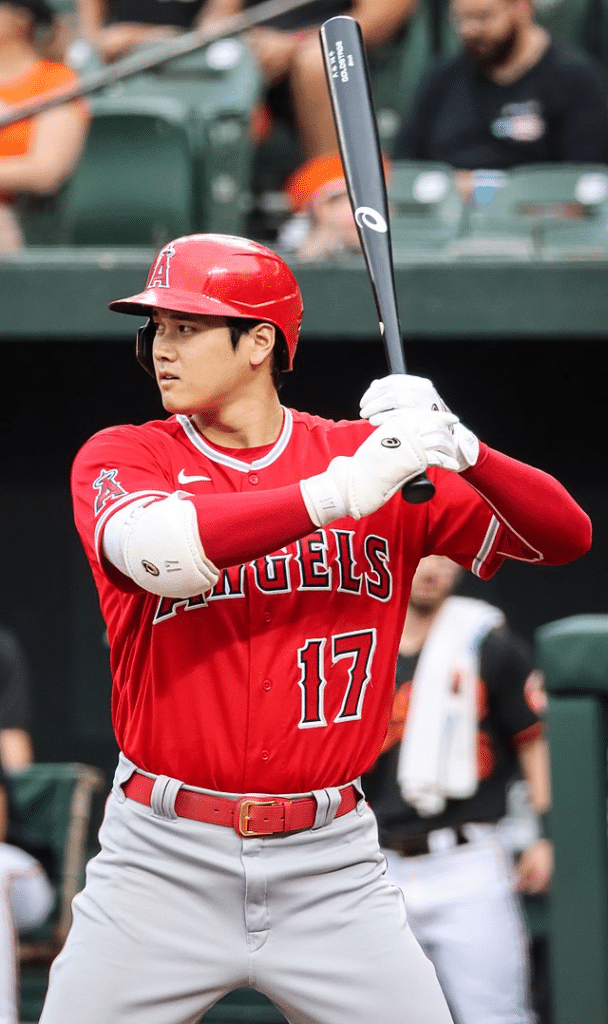By: Shunsuke Higuchi | Staff Writer
A series by Staff Writer Shunsuke Higuchi investigating the loss of superstar phenomenons in contemporary society.
zeitgeist (n): outstanding figures or noteworthy phenomena such as artists, fashion, film, and music representing a specific era.
0. Preface: The $700 Million Deal is “Not a Big Deal.”
In December 2023, a Japanese baseball player, Shohei Ohtani, signed an earthshattering $700 million 10-year contract with the Los Angeles Dodgers—the biggest contract in sports history. However, the baseball star does not seem to be celebrated at all. In fact, I interviewed a considerable amount of people in Newport, and while some people who watch baseball or sports recognize him, an average person most likely is unfamiliar with the two-time most valued player.
In 2021, Ohtani accomplished a historic feat of hitting 46 home runs and striking out 156 batters, earning his first unanimous American League MVP award. This unprecedented performance, both on the mound and at the plate, drew comparisons to hall of fame inductee Babe Ruth.
When I watched the highlights on YouTube in Japan, I was flabbergasted that there were very few people in the stadium where history took place. How is that possible? Statistically, he is as good as the Babe Ruth, the God of Baseball. Arguably, he might even be better considering what Ohtani achieved at the modern level. But nobody cares? These questions led me to think about “What is a star?” and the phenomenon regarding media in contemporary society.

Here are my two cents on this matter.
1. The Internet and the Increase in Stars
I. The increasing popularity of streaming services that allow us to pick whatever we want from an infinite amount of content
As a kid in the 2000s, I was infatuated with watching the same movies on VHS tapes or reading my favorite manga (Japanese comic books) in my free time, as there were significantly fewer entertainment options back then. However, younger audiences today have many choices. Between Netflix, YouTube, Nintendo Switch, and smartphone games, they are unlikely to revisit the same piece of media repeatedly. Many people from my generation must have had a similar childhood, such as playing Pokémon games on Nintendo DS or watching Harry Potter on DVD.

We were more likely to be engaged with one game or movie for much longer and spend serious time with works that resonated with us. I look back fondly at a lot of the entertainment I enjoyed as a kid and remember them well. However, this emotional attachment to our favorite content is inextricably intertwined with our nostalgia, and there is no denying that they are strongly etched in our memories since we experienced them in our childhood when our sensibility was sharp and vivid compared to adulthood. In reality, I did enjoy everything I had, not necessarily because I loved them but because I had no other options to choose from.
Streaming services promote individualized viewing experiences for each individual. We are more likely to diffuse attention among multiple different forms of content rather than being engaged in one thing. Thanks to streaming platforms, people who only watched Hollywood blockbusters in the past now have an opportunity to explore new genres of films. The broader access to numerous types of works has let people excavate marginalized or misunderstood genres of media such as anime. So, they are more likely to nibble here and there rather than sticking to one type of film.
Today, we rarely see people who only engage with a specific genre to a significant degree. A notable example of this phenomenon would be the extinction of otaku culture in Japan. In the 1980s and 1990s, there was a certain number of people called ‘otaku’ who would devote themselves to particular hobbies. Otaku would have expert-like knowledge and extensive understanding of their field, and many of them would often critique or analyze works and even make products themselves to sell. In the United States of the early 2000s, there was a vast difference between so-called “geeks” and “normal people.” If you watched an anime in the States back then, you were ostracized as a geek or nerd. Since the advent of streaming platforms and social media, almost no one would be considered a nerd for simply watching such types of shows. Today, it is difficult to be considered a nerd of something compared to the past in terms of the depth of your interest.

Today, we consume media at a different time and place than our peers, significantly decreasing communal experiences as a whole. We can watch whatever content we want on our device at our own speeds. Platforms like YouTube and Netflix offer convenient and seamless services, but no longer demand the same level of attention that a one-time-only TV broadcast would.
Due to the fierce competition brought about by an infinite amount of content, we see trends change rapidly today. As a consequence, we don’t see any iconic, impactful, culturally relevant movies that dominate public attention and represent our current era, such as Jaws (1975), Star Wars (1977-1983), or Harry Potter (2001-2011). We are missing the cultural zeitgeist in the modern-day.
Of course, if we see something entertaining or newsworthy, it immediately becomes popular and instantly “goes viral” online. However, even if it gains people’s attention, it will most likely soon fade away after only a momentary buzz. In addition, personal recommendations on streaming services, which offer the “most optimal” options for each user, contribute to the current situation where a movie is increasingly less likely to have a long-lasting impact on the public.

While we can now enjoy content optimized for each individual based on personal interests and favorites thanks to the implementation of algorithms, there is no iconic song, exceptional person, or cultural phenomenon that everybody in society recognizes and experiences with palpable significance. Sure, there are prominent figures in many industries whose influence we can see in numbers, such as their income or followers on social media. However, their impact, power, or influence is increasingly relative to icons in the past, and this trend seems to keep going as many of us prefer personalized content.
II. “Pro” vs. “Amateur”
Once upon a time, huge YouTubers like Mr. Beast or PewDiePie initially used to be “amateurs.” As ordinary as their viewers, they created content as a “representative of the average” person. Viewers perceived them as being down-to-Earth, perhaps even as a friend. However, due to the prevalence of the internet and the declining popularity of TV, the demand for online platforms like YouTube has massively expanded. As a result, some online personalities have gained popularity, influence, and name recognition on par with real celebrities. In other words, amateurs have transcended being an amateur and become “professional.”
YouTube and most other platforms often visualize every channel’s popularity or influence in numbers, such as subscribers, views, and likes/dislikes. This visualization of power by number has standardized creators’ “values” in a linear comparison. While users can see “the power” of each channel, it might have created a singular perspective that might give the impression that one channel is “better” than another solely based on numbers. Since the number of Professional YouTubers is enormous, they have weakened the indomitable image of Traditional Celebrities or Hollywood stars, who used to be perceived, without question, as someone ‘special.’ The objectification of content’s influence sometimes surprises or perplexes people who appreciate the significance of conventional celebrities.

Moreover, some Professional YouTubers are so influential that they collaborate with traditional celebrities on their videos, creating more “valuable” content. With fewer rules than television, YouTube is becoming a solid platform that matches or, in some cases, overpowers traditional media sources. The prevalence of collaborations by YouTubers and celebrities signifies that the distinction between professionals and amateurs is getting increasingly vague. It has proved that non-traditional platforms can relatively easily create “professional” content if they have ideas for video and their agency’s permission.
We can see another aspect of traditional stars whose influence is becoming relative on other social media. If we look at a celebrity’s official Twitter (X) account, we immediately see their events’ exact dates and places and can send a direct message to them. While fans used to buy a photograph of a star sold at an event, we can now screenshot a live stream and have a snapshot of our idol for free. Through this progressive technology, followers can virtually gain direct contact with their idols by asking a specific question, and the very person answers it. These digital developments reveal the hidden aspects of celebrities who have been “someone living above the clouds,” dismantling illusionary images futilely maintained by their agency. This way, the evolution of the media landscape has significantly shortened the physical and psychological distance between stars and fans.
Photos provided by WikiCommons.














